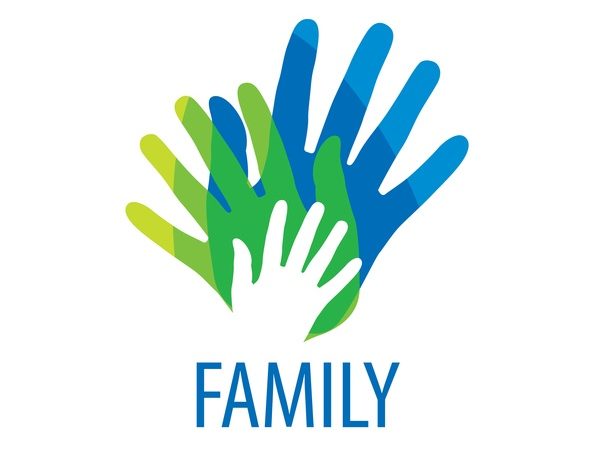family medicine
The Top 5 Benefits of Becoming a Family Medicine Physician

Family medicine physicians are more than just doctors. They are the backbone of the public healthcare system, often identifying important public health trends before they can become more acute. They help improve access to care for people from all walks of life. They are among the most trusted professionals in the country.
But they also face the same challenges that are affecting all doctors and specialties these days.
Government mandates, changing reimbursement models and increased administrative duties make the job as challenging as ever.
But it’s still an incredibly rewarding career–why else would nearly one-third of all physicians in the United States practice family medicine?
Yes, there are many great reasons to become a family medicine physician. Here’s a look at the top five benefits:
1) Job Security
The United States is in the throes of a physician shortage. According to the Association of American Medical Colleges, the country will be face a shortage of between 46,000 and 90,000 physicians by 2025. While that’s bad news for the country, it means that family medicine physicians will continue to be in demand.
Having job security allows you to focus on delivering exceptional care without having to devote an inordinate amount of time to administrative duties such as marketing.
2) Variety
Unlike specialists, family medicine physicians care for the entire patient–from head to toe. This means a family medicine physician will never know what cases patients will bring through your door–from chronic illness to complicated medical and psychosocial issues to the common cold.
The variety of cases keeps physicians sharp, intellectually engaged and on their game as it relates to diagnostic skills. In addition, the variety of cases makes family medicine physicians incredibly valuable in research settings, where their clinical experience provides a real-world perspective to discussions that are often steeped in theory.
3) Longevity
There is something that is incredibly rewarding about caring for patients across their lifespans. The family medicine physician often begins seeing patients when they are quite young and continues caring for them throughout their lives.
This longevity creates bonds between physician and patients that last lifetimes, improve outcomes and truly allows for shared decision-making when it comes to determining the best courses of action.
In a world where short office visits are more common, having the ability to really get to know patients is becoming increasingly rare–and perhaps the most rewarding aspect of being a family medicine physician.
Work-life balance
According to the American Academy of Family Physicians, family medicine physicians consistently report higher levels of professional satisfaction than other physicians–and it is largely due to their ability to strike a better work-life balance.
Family medicine tends to offer a higher degree of flexibility than other medical specialties. Because they are in such high demand, they can typically pick their practice environment, practice focus, hours and settings (large urban hospital versus a smaller community hospital, for example).
These options allow family medicine physicians to strike a more rewarding work-life balance.
5) The clinical settings
A family medicine physician can work anywhere in the country, from a community hospital to a small-town clinic to a bustling urban hospital complete with cath labs and helicopter pads.
Being able to choose the clinical setting in which you want to work is one of the most intriguing benefits of being a family medicine physician.
Many doctors cite a desire to work at community hospitals, where they are able to fully utilize the full range of their expanded functions, take on important leadership roles within the hospitals and enjoy the high quality of life that comes with living in a smaller community.
—
Elliot Health System is always interested in hearing from incredible family medicine physicians.
![]()
Everything You Need to Know About the MC-FP Exam

The American Board of Family Medicine requires physicians to take the MC-FP Exam to be recertified or for your initial certification. The family medicine board certification requirements can be made into a checklist for your medical license that must be unrestricted to practice in Canada or the United States. The compliance documents for the physician’s professional role and their license to practice medicine are documents that must be submitted.
In order to be ready, you should prepare in advance for an all-day affair of sitting and answering questions on a computer.
The MC-FP Examination
* No score will be given on the 20 field questions.
* Section 1 is two hours with 120 multiple choice questions.
* A 15-minute break is allowed.
* Section 2 and 3 are Module exams and both are 45 minutes in length with multiple choice questions.
* The 70-minute break is allowed.
You should take the break because a few deep breaths, getting something cool to drink and let your brain relax with re-energize the mind.
* Section 4 consists of 80 multiple choice questions and is 95 minutes in length.
* The break time is 15 minutes.
* Section 5 has 80 multiple choice questions and is 95 minutes in length.
Be careful when you select a module. It cannot be changed after it has been confirmed. When the exam has reached its time limit that exam has ended. If you fail, you have to remain qualified to retake the exam. There is no limit on how many times you can retake the exam.
The family medicine board certification requirements have a list of every type of physical malady you will come in contact with during your practice.
The Self Assessment Module Requirements
* The Part II module earns 15 points.
* Completing 3 modules will give you the 50 points required.
* The Knowledge Assessment and a Clinical Simulation has 60 questions.
*The required credits of Continuing Medical Education or CME
Part II Module
* Knowledge Assessment and a Clinical Simulation with 60 questions on a selected topic. You have to answer 80% of the questions correctly and then the module must be completed within a year.
Part II Alternative Modules that can be completed to count toward the 50 points.
* Patient Centered Medical Home 10 points
* Health Literacy Module 10 points
Part III
* You passed the MC-FP examination.
Part IV Modules
* Performance in Practice or PPM
* Methods in Medicine Module or MIMM is for physicians who don’t participate with “hands on” patient care or work in the administrative capacity.
The Part IV module needs one part of each stage to be completed successfully. Part IV alternative modules that can be completed to count toward the 50 points.
MC-FP Entry Fees For The Modules
* Payment is due at the start of each module.
* The modules that are completed before starting the Entry Cycle Process will be forfeited.
* Part II modules must be completed within one year. Incomplete modules can be rescheduled or a different module can be chosen.
* Fees for modules not taken will be refunded.
* You will receive 15 CME credits for completing each module.
The family medicine board certification requirements apply to physicians in the military, the Coast Guard, Police departments, private practice and agencies that employ a doctor.
Congratulations! You have taken the Maintenance of Certification Program for Family Physicians or MC-FP exam and maintained your license to practice medicine.
—
Are you seeking the perfect place to practice medicine now that you have passed your MC-FP? Consider the opportunities Elliot Health System has to offer.
![]()





Recent Comments